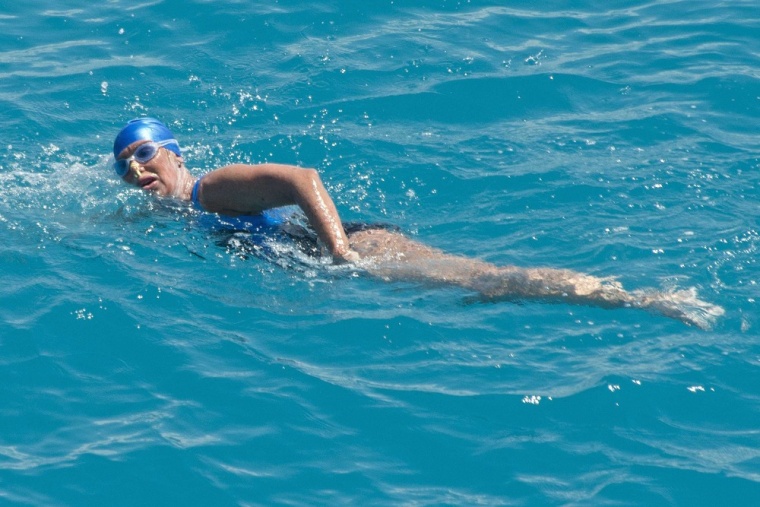Record-breaking long-distance swimmer Diana Nyad is slated to come face-to-face with a group of marathon swimmers who have raised doubts about whether the 64-year-old completed her crossing of the Florida Straits honestly.
Some fellow long-distance swimmers have flooded social media platforms and blogs to question how Nyad managed to dramatically boost her pace during one leg of the treacherous 110-mile swim from Cuba to Key West, Florida.
They have floated theories that Nyad stayed aloft in the rough ocean waters by clutching one of five support vessels at her side.
The skeptics have also questioned whether Nyad broke with traditional guidelines of her sport by wearing a specialized mask and wetsuit to guard herself from potentially deadly jellyfish stings. That runs counter to the so-called "English Channel rules" for swimmers who cross between France and Britain, according to the Associated Press.
Nyad's team has strongly denied allegations of wrongdoing, and said in a statement: "Diana is proud of what she and her team accomplished last week, and she is committed to complete transparency."
Now, a dozen veteran marathon swimmers from across the globe have been invited to participate in a panel discussion via Skype on Tuesday evening with Nyad and her team, according to the AP.
Nyad's defenders have said that while the body suit and face mask shielded her from jellyfish, it actually exacted a price on her swimming abilities by weighing her down and limiting her arm and leg movement, according to the AP.

And the face mask also apparently invited more water resistance and caused her to gulp sea water, leading to repeated retching and vomiting, the AP reported.
After she completed the much-watched swim, Nyad told reporters that she was aided by a favorable current in the Gulf Stream during the latter half of the crossing, allowing her to accelerate her pace on the way to the finish line.
The majority of social media discussions centered on Nyad's performance don't accuse her of cheating, but rather were aimed at getting a full disclosure of swim data to demonstrate how she achieved the stunning feat — her fifth attempt at the crossing.
"In reading through Diana's crew's live-blog, trying to suss out how this incredible swim happened, I was struck by how little information there actually was," California-based long-distance swimmer Evan Morrison wrote on the online Marathon Swimmers Forum.
He added: "These details matter because Ms. Nyad is claiming — and the media reporting without fact-checking — a new world record for longest-distance nonstop, unassisted ocean swim."
According to Nyad's Twitter, she officially spent 52 hours, 54 minutes, and 18.6 seconds swimming.
The Florida Strait has been conquered only once, by Australian Susie Maroney, who used a protective cage during a 1997 swim.
Just this past June, Australian Chloe McCardel abandoned an attempt after 11 hours when she was badly stung by a jellyfish.
Nyad also once swam around the island of Manhattan in 1975 and a from the Bahamas to Florida in 1979 — departed on Saturday morning and arrived a day earlier than original estimates.
The Associated Press contributed to this report.
